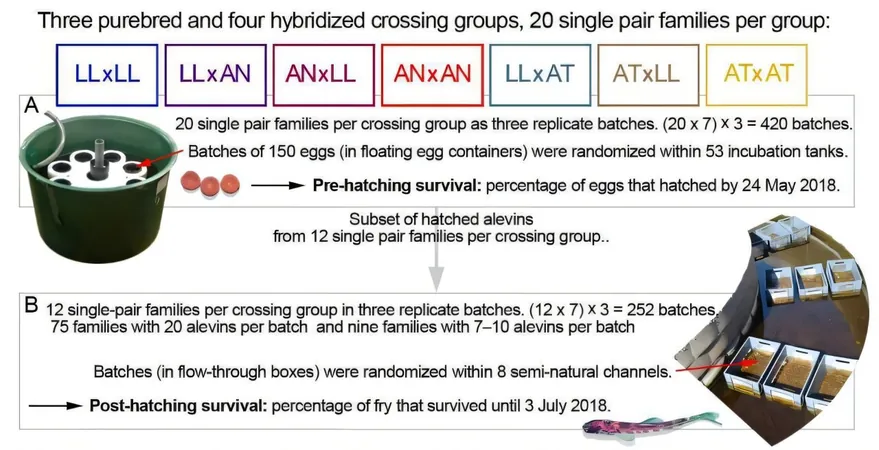
Genetic Rescue of Endangered Landlocked Salmon: A Promising Hybridization Strategy Unveiled
2024-12-03
Author: Emma
Abstract
A groundbreaking doctoral dissertation by Aslak Eronen, MSc, titled "Hybridization of landlocked and anadromous Atlantic salmon: Potential genetic rescue in a population threatened by inbreeding," is set to be defended at the Faculty of Science, Forestry and Technology, Joensuu Campus, on December 4, 2024.
Introduction
This research sheds light on the critical plight of the landlocked salmon population in the Vuoksi watershed in Eastern Finland, which is facing an imminent risk of extinction due to inbreeding.
Genetic Rescue Strategy
The study focuses on a pivotal conservation biology strategy—genetic rescue—which seeks to enhance genetic diversity by introducing new genetic material from anadromous populations into isolated landlocked groups.
Current Status of Landlocked Salmon
The dire situation stems from habitat destruction and fragmentation, leading to small, inbred populations that struggle to survive.
The landlocked salmon (Salmo salar m. sebago Girard 1858) native to Lakes Saimaa and Pielinen, once on the brink of extinction in the 1970s, experienced a temporary recovery thanks to fish hatcheries. However, the lack of genetic diversity continues to threaten their survival as these fish are increasingly exposed to inbreeding depression—a phenomenon where limited genetic variation results in a higher probability of extinction.
Research Findings
Eronen's research demonstrates a promising approach: he successfully hybridized landlocked salmon with two nearby anadromous Atlantic salmon populations from the Baltic Sea watershed.
In the first article of his dissertation, early results show hybrid vigor; hybrids exhibited improved embryo survival rates compared to purebred landlocked salmon, especially when crossed with specimens from the River Neva.
Further analysis in subsequent articles reveals significant behavioral patterns linked to this hybridization. Eronen found that landlocked salmon presented bolder behaviors on average compared to their anadromous counterparts, with hybrids exhibiting an intermediate boldness.
Survival Rates and Challenges
This behavioral adaptability may play a crucial role in survival strategies in changing environments.
Moreover, Eronen's research highlights that hybrid juvenile salmon demonstrate enhanced survival rates when subjected to predation pressure.
Notably, this genetic rescue effect is countered by susceptibility to the parasitic fluke Diplostomum pseudospathaceum, which can cause cataract formation in fish, illustrating the delicate balance between potential benefits and risks associated with hybridization.
Conservation Implications
As conservationists grapple with the complexities of maintaining biodiversity in increasingly fragmented habitats, Eronen's findings offer a glimmer of hope for the future of the critically endangered landlocked salmon.
The research underscores the need for careful consideration of genetic and ecological factors when implementing outbreeding strategies to restore threatened populations.
Conclusion
Stay tuned for more updates on this pivotal research, as it could change the landscape of conservation biology and the fight against species extinction!









 Brasil (PT)
Brasil (PT)
 Canada (EN)
Canada (EN)
 Chile (ES)
Chile (ES)
 Česko (CS)
Česko (CS)
 대한민국 (KO)
대한민국 (KO)
 España (ES)
España (ES)
 France (FR)
France (FR)
 Hong Kong (EN)
Hong Kong (EN)
 Italia (IT)
Italia (IT)
 日本 (JA)
日本 (JA)
 Magyarország (HU)
Magyarország (HU)
 Norge (NO)
Norge (NO)
 Polska (PL)
Polska (PL)
 Schweiz (DE)
Schweiz (DE)
 Singapore (EN)
Singapore (EN)
 Sverige (SV)
Sverige (SV)
 Suomi (FI)
Suomi (FI)
 Türkiye (TR)
Türkiye (TR)
 الإمارات العربية المتحدة (AR)
الإمارات العربية المتحدة (AR)